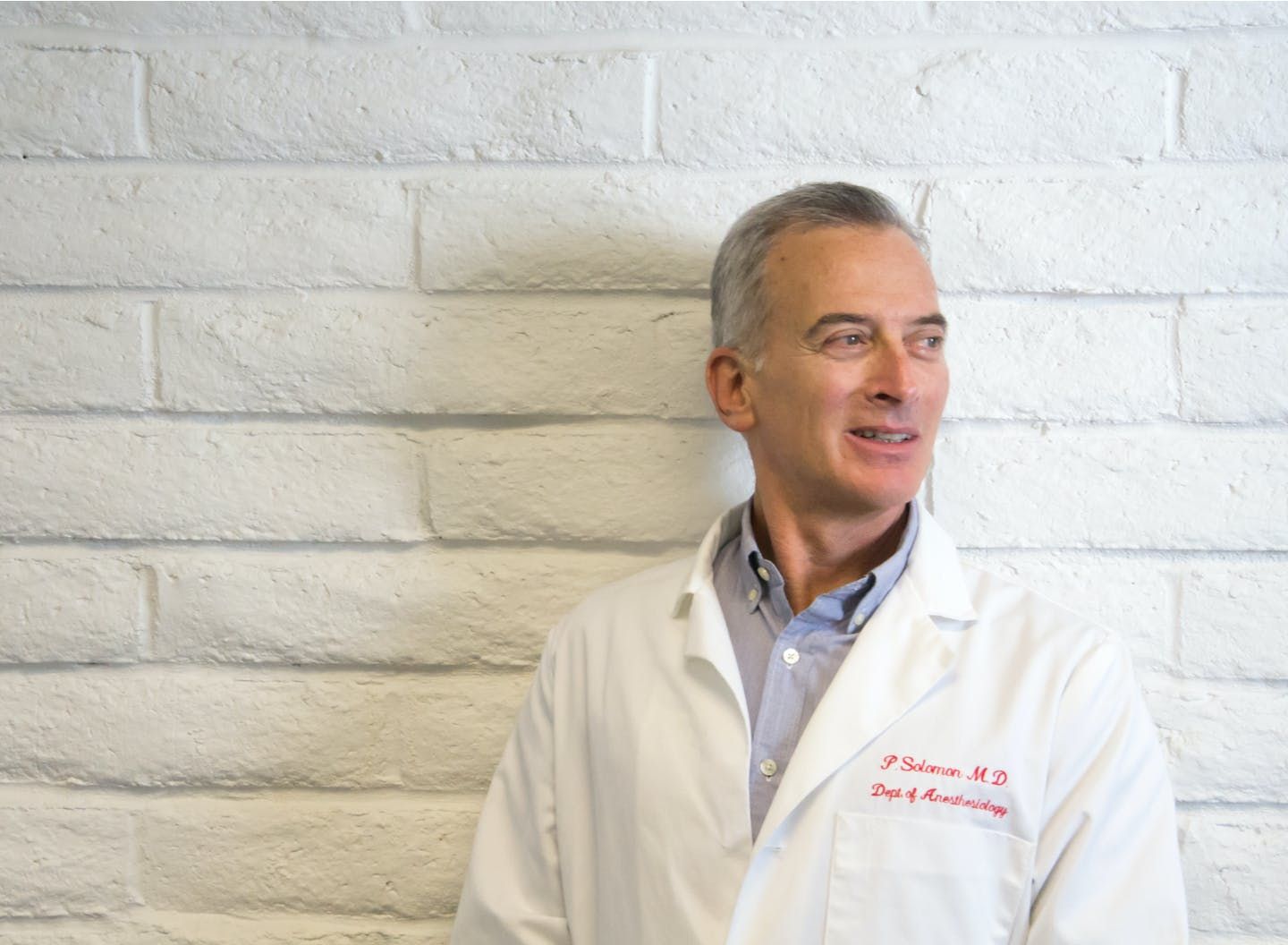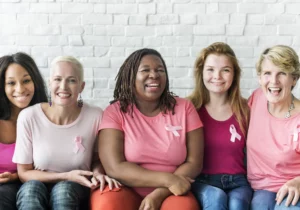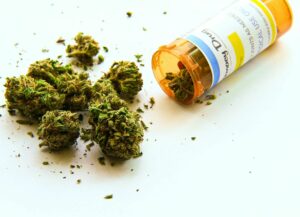Dr. Perry Solomon, HelloMD’s chief medical officer, sat down with Miriam Knight, host of New Consciousness Review Radio, to talk about all things cannabis. In the hour-long session, Dr. Solomon covered a wide range of topics, including marijuana’s pain-relieving properties; why cannabis consumers should watch out for pesticides and other contaminants; potential drug interactions with the plant; and the studies Dr. Solomon is involved in to assess cannabis’s efficacy in improving various conditions.
Following are excerpts from the interview. You can also listen to the full discussion on New Consciousness Review’s website.
Miriam Knight: I’m very curious. As an anesthesiologist, what got you interested in cannabis?
Dr. Perry Solomon: I practiced anesthesia for quite a long time, and a mutual friend had [introduced me to] the two founders of HelloMD. And we … gave our first lecture, myself and [Co-founder] Pamela Hadfield, at a senior living facility in northern California called Rossmoor where they had already had a cannabis club, which I was surprised about. … [This] was over three years ago.
We showed up, and there was about a hundred members of the club already there and 80 of them had already had their recommendations for cannabis. And I quite frankly, as one of my first exposures in that medical orientation for cannabis and medical conditions, I was really quite surprised. And all of them had it for pain. They all used cannabis to help alleviate their pain, whether for chronic back pain or arthritic pain in the elbows, knees, joints or whatever.
And I was just stunned that these people had such great efficacy or relief from their pain from using medical cannabis. And were able, as they all stated, to decrease or completely eliminate any opioid use. [Opioids] that they had been prescribed by their physicians. And they absolutely preferred [cannabis]. And said, “We are never going back to opioids” because it just worked so terrifically. I was amazed.
You mentioned I went to Columbia, had a traditional medical school anesthesia training background, and I was just amazed that it had that much proof from just these people that it worked. And then I did due diligence, reviewed studies. Of course, most were from out of the country because it’s unfortunately difficult to do those types of studies here in the United States, but [they’re] still valid studies. And I said, “Well, this really works, and there’s more to it than just people using it to get high,” which has been and still remains the stigma about cannabis to a great many people.
MK: What would you say to a patient who is in pain, but they’re afraid of the stigma of using cannabis and worried about getting high?
PS: Well, there’s essentially two main components of cannabis. There’s THC (tetrahydrocannabinol), which essentially is the psychoactive effect of cannabis, or CBD, cannabidiol, that is essentially the non-psychoactive effect of cannabis. And so what we tell people if they say, “Listen. Psychoactive effects are something I don’t want to do at all or as minimized as possible,” is that there are different ratios of cannabis with the THC and CBD. And so what we would recommend is for someone to take a higher ratio of CBD than THC, and to be able to titrate or to adjust the dose that they take depending on the results that they get.
That’s quite frankly, one of the more frustrating things that physicians as well as patients come across in that there’s such an individualistic reaction to cannabis itself that one size does not fit all. Doctors have the same issue in that they’ll say, “Take this one antibiotic and take it every six hours,” and they’ll know that if [the patient] gets it from CVS, Walgreens, Rite Aid, whatever, that this antibiotic is going to have exactly this amount of component; it will be reliable no matter where you get it.
And unfortunately, cannabis still isn’t like that; everyone’s reaction to cannabis is different. So what works for you versus someone else who has the same medical condition may not work the same way. And so there is some experimentation individually that people have to do and be willing to do to be able to get the efficacy or the results that they’re looking for.
Like you said for pain or for insomnia, for example. Someone says, I have trouble sleeping. Well, there’s two different parts. Do you have trouble going to sleep, or do you have trouble staying asleep, because there’d be two different types of cannabis that you use in each of those situations.
MK: What conditions is CBD best for? What should you look for when you’re selecting a CBD product?
PS: The DEA says that because CBD is part of the cannabis plant, [it] is still a Schedule 1 product. So strictly legally speaking, the shipping of CBD is classified the same as cannabis, anything with THC. That being said, there are companies that do ship all over the country CBD products, and you might find them on the internet, you might find them in a magazine or whatever.
And the issue with CBD is that it depends where the CBD comes from. In other words, it could be plant-derived from cannabis itself and then extracted, or it can be extracted from hemp. So, hemp CBD and cannabis CBD are two different things. In other words, the CBD that’s sold in the mass market, a lot of this hemp comes from overseas, and you need a large volume of hemp to be able to extract CBD.
And so what has been shown to happen is in some countries, there are many pesticides being used. There’s poison, there are fertilizers that are being put into the ground to make the plants grow. So, you have the plants absorbing all of that, the toxins and pesticides, etc., and then that’s being shipped to, for example, the United States or wherever. And this being the CBD that’s extracted essentially gets concentrated from these hemp plants where you don’t really know how they’re produced or what’s given to them to help them grow.
All of those toxins and pesticides get concentrated into the CBD that you would purchase in a routine type of environment. So, anyone who gets CBD, who wants to purchase a CBD product, I would caution them to know the etiology of where they got the CBD from. … You want to know if the company says, “Yes, we grow our own hemp. It’s in Colorado … and we do our own extraction. We do our own analysis,” thereby controlling what it is you’re taking when you purchase a CBD product. You may be using it for inflammation, for anxiety, things that you want to be able to be able to use in a safe manner. But you know, I’d caution everyone to know where … the hemp comes from before they use any type of CBD product.
MK: Can you overdose on cannabis?
PS: Nope. … [Researchers have] tried overdosing animals, mice with cannabis, and they’ve been completely unsuccessful. I mean it would take pounds and pounds, and no one would be able to do that. So people have tried; it’s called the LD 50, the lethal dose 50, and there just is no number. It’s infinite because you would go to sleep or that’s pretty much about it—meaning, you’d go to sleep and then wake up. But you know, there is no overdosing with cannabis.
MK: [Cannabis] does have a stimulating effect on the immune system, doesn’t it?
PS: It does. And there have been in vitro, which means in the lab, studies that [show] various types of cannabis can kill some cancer cells. Again, that is far different than saying it cures cancer in a person. It has been shown in the laboratory to have that effect and in some small animal models, but to extrapolate that to, and apply it to humans … for the person to say, “Well, I have breast cancer, and I’m on chemo, I don’t want that. I’m just going to put this cannabis ointment on my breasts, and it’s going to cure the cancer” and to stop [all other treatment]. I would say, “Please don’t do that. And continue to see your physician about it.”
If you’re new to cannabis and want to learn more, take a look at our Cannabis 101 post. HelloMD can help you get your medical marijuana recommendation; it’s easy, private and 100% online.






